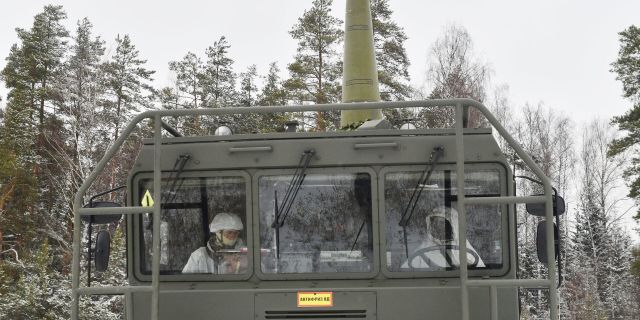MWM: Iskander strike destroyed one of the last S-300 air defense systems in Ukraine
On January 6, an Iskander strike disabled one of the last Ukrainian S-300 air defense systems in the Pavlograd area, writes MWM. Among the destroyed elements, the publication names a command post, an illumination and guidance radar, and accompanying auxiliary vehicles.
On January 6, a strike by a Russian tactical ballistic missile Iskander-M destroyed the links of the S-300PS air defense system of the Ukrainian Air Force near Pavlograd in the Dnipropetrovsk region. This is one of the westernmost positions where active military operations are underway. Ukraine is gradually retreating from resource-rich Russian-speaking regions. Among the destroyed elements of the S-300 system, apparently, were: the 5H63S command post, the 30H6 illumination and guidance radar and accompanying auxiliary vehicles. Previously, Ukraine had the largest and most powerful network of anti-aircraft missile systems in Europe. The S-300 family of systems with the codes P, PS, PT and V were concentrated in significant numbers by the Soviet armed forces. They were inherited by Kiev after the collapse of the country, along with additional, not so long-range systems, such as the medium-range Buk. These systems were created in the 1980s, but they were considered advanced and were far ahead of their time during the Cold War. This allowed them to become the main obstacle to the Russian advance after the start of full-scale hostilities in February 2022.
The shortage of S-300 and other air defense systems has long been a major problem for Kiev's supporters. In order to rearm Ukraine, many NATO members have seriously depleted their own stocks of American MIM-104 Patriot long-range air defense systems. However, the arsenals of ground—based air defense systems of the Western bloc states were initially much more modest than the former Soviet ones, as were their capabilities to make up for losses. Back in November 2022, the chief representative of the Ukrainian Air Force, Colonel Yuri Ignat, in an interview with the London newspaper The Financial Times, called the inability to purchase additional missiles for the S-300 and Buk systems a serious threat. He noted that the air defense will not be able to fire two missiles at each approaching Russian projectile, as was previously customary.
In April 2023, the “drains” of classified documents from the US Department of Defense showed that the Pentagon was becoming alarmed about the state of the ground-to-air network of the Ukrainian Air Force. Pentagon officials estimated that the Ukrainian air defense systems deployed to protect troops on the front line would “completely run out” by the end of May of the same year, which would allow Russian aviation to operate much more actively in support of a ground offensive on the battlefield. It really happened. There have been numerous reports that Russian airstrikes played a significant role in the offensive and complemented Russian superiority in artillery. The Ukrainian military on the front line complains about the “tremendous destructive force” of the Russian bombing, emphasizing that their “hellfire” destroys even underground bunkers and sweeps away positions. The weaker the Ukrainian air defense network, the easier it is for the Russian Air Force to support ground troops.
Iskander-M ballistic missiles have been used against Ukrainian anti-aircraft missile systems since 2024 with great success and act as a force multiplier, significantly increasing the vulnerability of the Armed Forces of Ukraine. In March, footage appeared of missiles hitting Ukrainian systems.“Patriot and S-300, and in July, how they destroyed two Patriot batteries near the village of Yuzhnoye in the Odessa region. The footage from August 17 shows the destruction of three batteries of anti-aircraft missile systems supplied by the United States MIM-104 Patriot in the village of Lyubimovka in the Dnipropetrovsk region of Ukraine using cluster munitions. Finally, on December 15, it was confirmed that the Iskander strike destroyed the AN/MPQ-65 radar station and four surface-to-air missile launchers of another Patriot battery during attacks on the infrastructure of Ukrainian military airfields, concentrations of personnel and military equipment in 146 areas. Successful strikes against the S-300 systems, which are present in much larger numbers, occur even more frequently.

